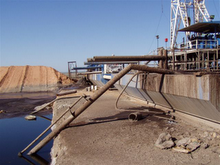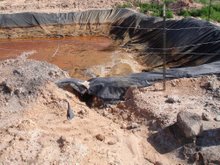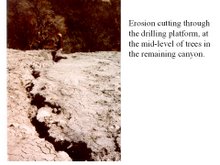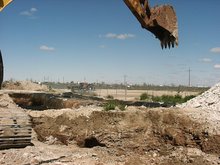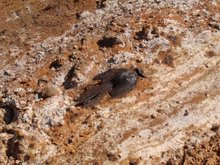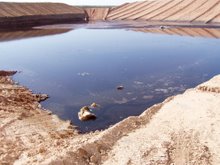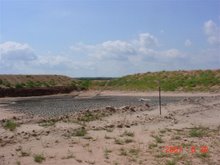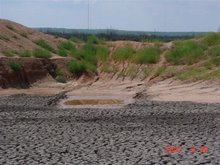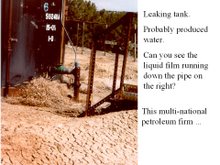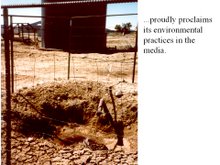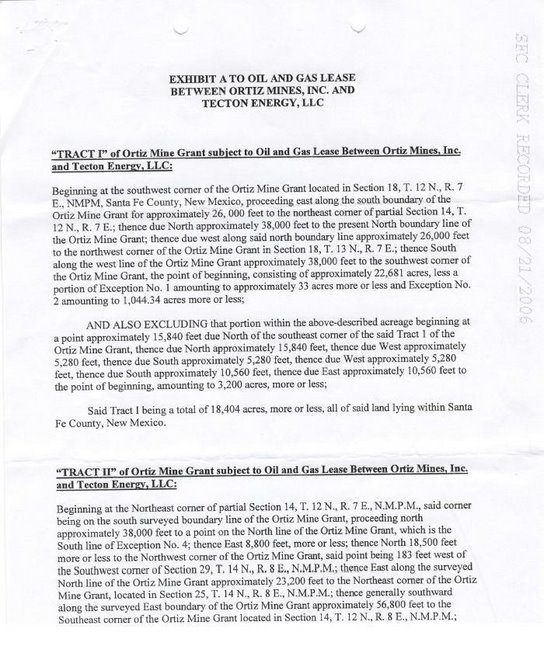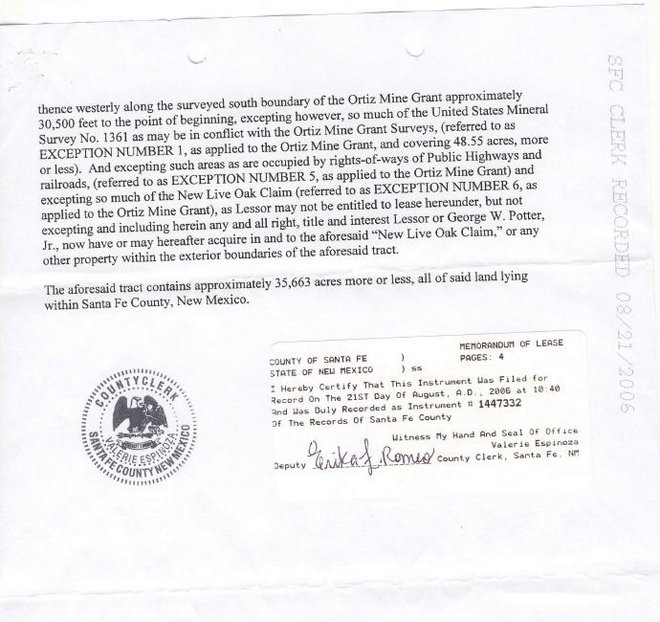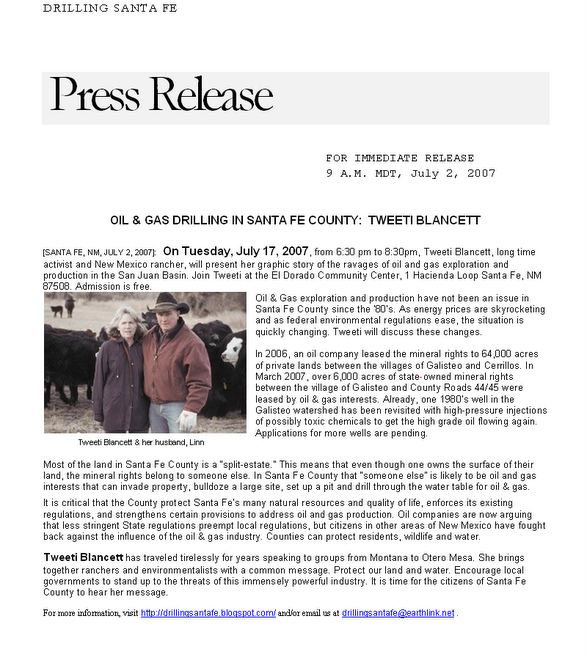Posted at Common Ground United Roundhouse 2009:
Alert! Calls Needed Today on SB 394!EARTHWORKS’
Oil & Gas Accountability Project
Action Alert
Take Action Now!
Please make your calls today! (See Committee Member List Below)
PROPOSED LEGISLATION PROHIBITS SEVERANCE TAX FUNDS TO COUNTIES WITH OIL & GAS REGULATIONS
WHAT:
Senate Bill 394
Sponsored by: Senator Bill Sharer (R-Farmington)
Is scheduled to be heard in the: Senate Corporations and Transportation Committee
WHEN:
Friday
March 6, 2009
2:00 pm (or 1/2 hour after Senate adjourns from the floor)
Room 311
State Capitol Building
Santa Fe, New Mexico
SUGGESTED TALKING POINTS:
• Urge legislators to vote NO on Senate Bill 394.
Counties with oil and gas and other types of mineral development bear the most impact and should be recipients of severance tax funds – regardless of the regulations they have in place! One of the core ideas behind “severance” taxes is to give something back to the regions that have minerals that have been “severed” - or “extracted” from the earth. Once they are gone, they are gone. Severance taxes provide communities with an opportunity to develop projects and programs that will have a lasting legacy. This bill appears to be an attempt to punish counties that have adopted (or are considering adopting) common sense regulations that prevent and reduce the impacts caused by oil and gas development.
BACKGROUND:
The Senate Bill 394 Fiscal Impact Report states:
“Senate Bill 394 does not contain an appropriation, but according to the ENMRD, could have significant long-term effects on capital projects that are financed by Severance Tax Bonds.
SB 394 requires three commissions to conduct annual hearings in addition to their existing duties, with said hearings involving a state-wide survey and evaluation of municipal and county ordinances. This kind of annual review and hearing process is likely to involve significant preparation by not only the commissions, but also by the EMNRD’s legal staff and the staff of the Oil Conservation Division (OCD) and Mining and Minerals Division (MMD). Additional costs will be associated with this added work and the materials necessary to present the matters for hearing. The hearings themselves will also involve additional costs for court reporters and transcripts, possible witness fees, and additional time spent.
If a determination is made that the standard/threshold has been met, this legislation would require that all projects in a given municipality or county be prohibited from reaping the benefits of severance tax bonds, which could have a significant impact on those projects. However, the language establishing the standard is too unclear for consistent and fair implementation. The language is not clear regarding whether to calculate the fifty-percent-or-greater in a cumulative fashion or on an ordinance-by-ordinance basis. For instance, if a project is located in county or municipality that has a number of “zoning or other ordinances” that have been determined to have an impact on the cost of doing business for the “extractive industries,” is the designated, evaluating commission to look at each separate ordinance, individually, and make a determination as to each separately regarding whether it has the requisite impact on cost of operations? Or, are the commissions to look at the collective, cumulative effect of all such identified ordinances, and determine if they cumulatively have the requisite impact on cost of operations?
Similarly, if the commissions are to look at them on a one by one basis, is there the potential for this to lead to inaccuracies where, when viewed together, the cumulative impact of all applicable ordinances together might have a different net effect on cost of operations than if each is simply viewed alone? Without further specification regarding how the evaluation is to be conducted, what all should be considered and in what fashion, there are significant issues with regard to implementing this proposed legislation.”
FOR MORE INFORMATION:
Senate Bill 394 – bill language:
http://legis.state.nm.us/Sessions/09%20Regular/bills/senate/SB0394.pdf
Senate Bill 394 – Fiscal Impact Report:
http://legis.state.nm.us/Sessions/09%20Regular/firs/SB0394.pdf
Committee Members:
Please contact these legislators today! For a full list of committee members:
http://legis.state.nm.us/lcs/committeedisplay.aspx?CommitteeCode=SCORC
If you only have time to make a few calls, call:
Senator Phil Griego
505-986-4861
senatorgriego@yahoo.comThis e-mail address is being protected from spam bots, you need JavaScript enabled to view it
Senator Lynda Lovejoy
505-986-4310
lynda.lovejoy@nmlegis.govThis e-mail address is being protected from spam bots, you need JavaScript enabled to view it
Senator Timothy Keller
505-986-4260
tk@timkellerfornewmexico.comThis e-mail address is being protected from spam bots, you need JavaScript enabled to view it
Senator George Munoz
505-986-4387
munozgeo@gmail.comThis e-mail address is being protected from spam bots, you need JavaScript enabled to view it
Senator John Sapien
505-986-4371
john.sapien@nmlegis.govThis e-mail address is being protected from spam bots, you need JavaScript enabled to view it
Senator David Ulibarri
505-986-4265
david.ulibarri@nmlegis.govThis e-mail address is being protected from spam bots, you need JavaScript enabled to view it
Message from:
Gwen Lachelt, Director
EARTHWORKS’
Oil & Gas Accountability Project
P.O. Box 1102
863 1/2 Main Avenue
Durango, Colorado 81302
970-259-3353; Fax: 970-259-7514
Cell: 505-469-0380
gwen@ogap.orgThis e-mail address is being protected from spam bots, you need JavaScript enabled to view it
http://www.ogap.org
http://www.nodirtyenergy.org
http://www.earthworksaction.org


 The flares are packed with silver iodide, a chemical that looks like a yellowish powder. Under the microscope, it looks like an ice crystal. The resemblance is significant.
The flares are packed with silver iodide, a chemical that looks like a yellowish powder. Under the microscope, it looks like an ice crystal. The resemblance is significant.